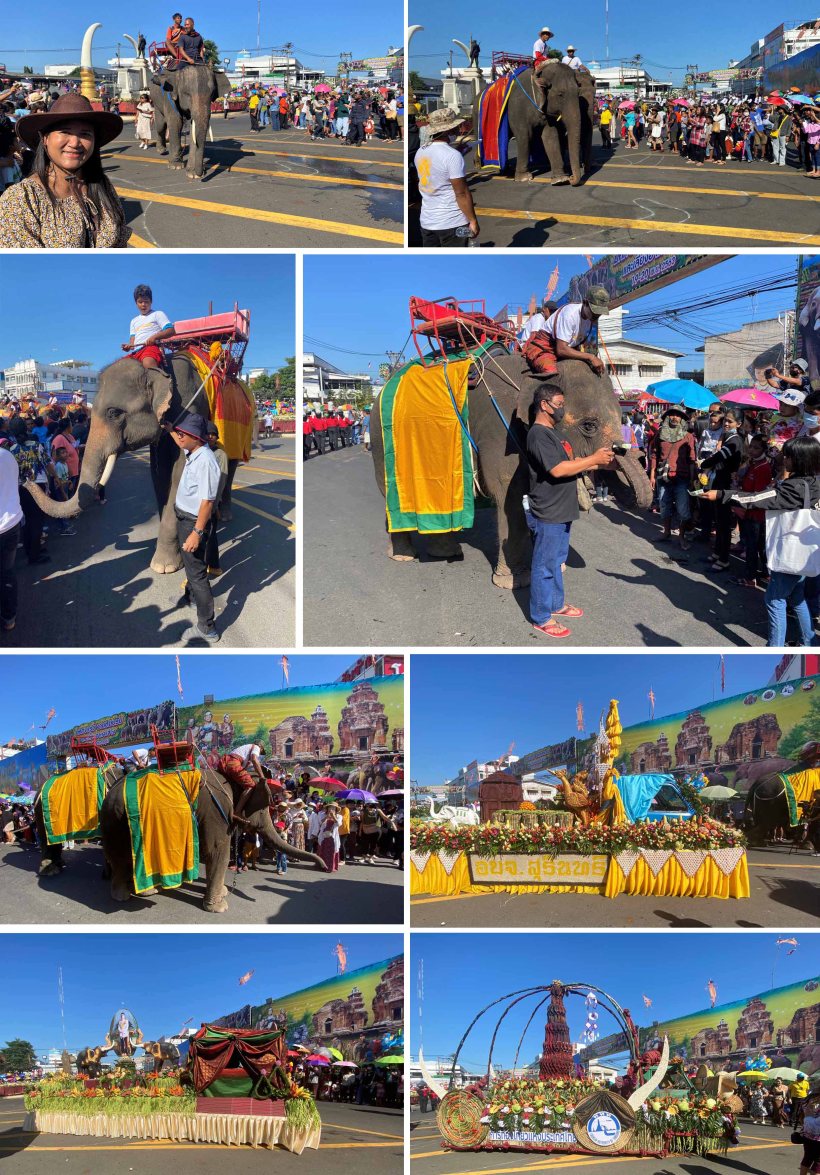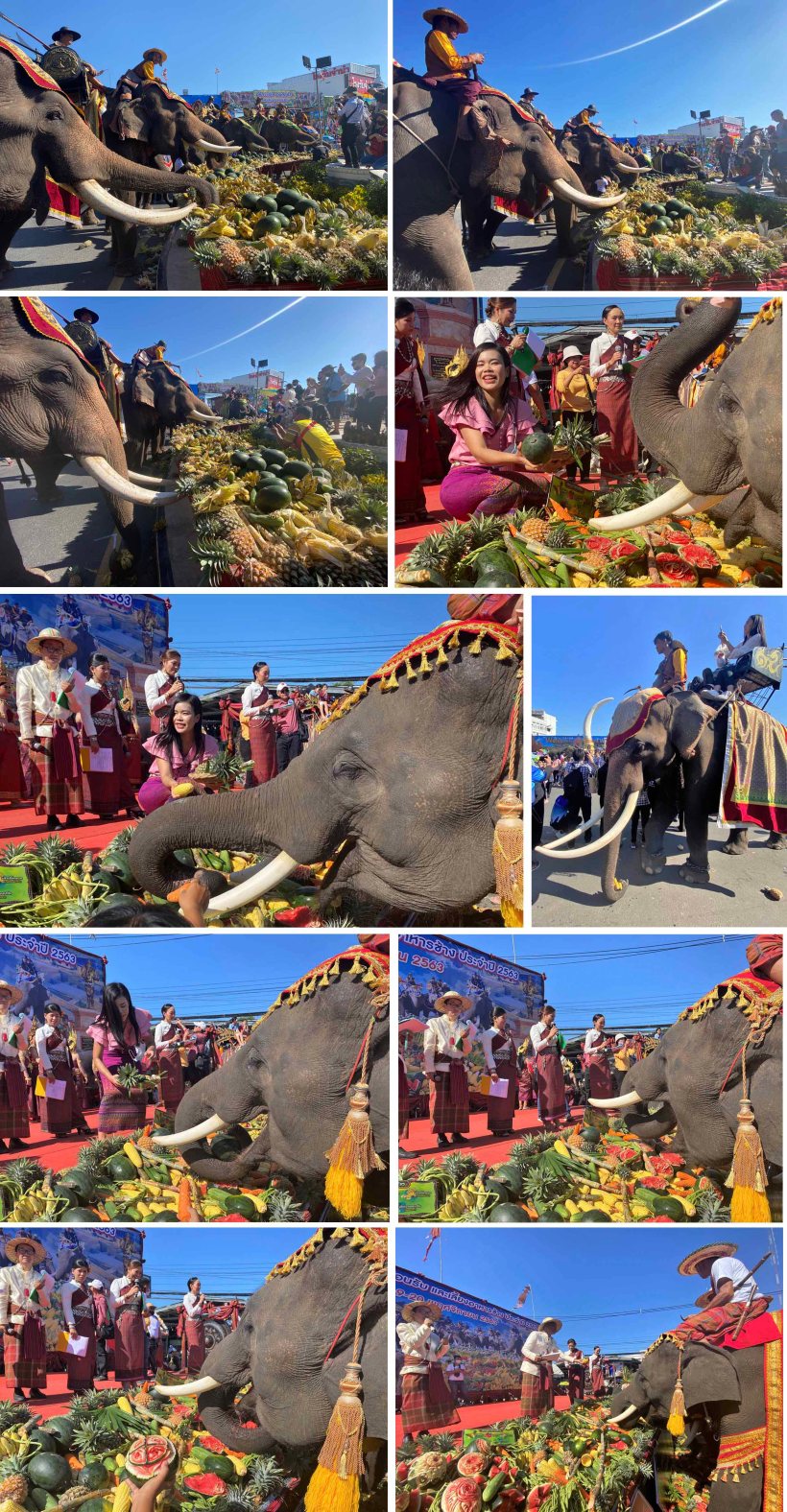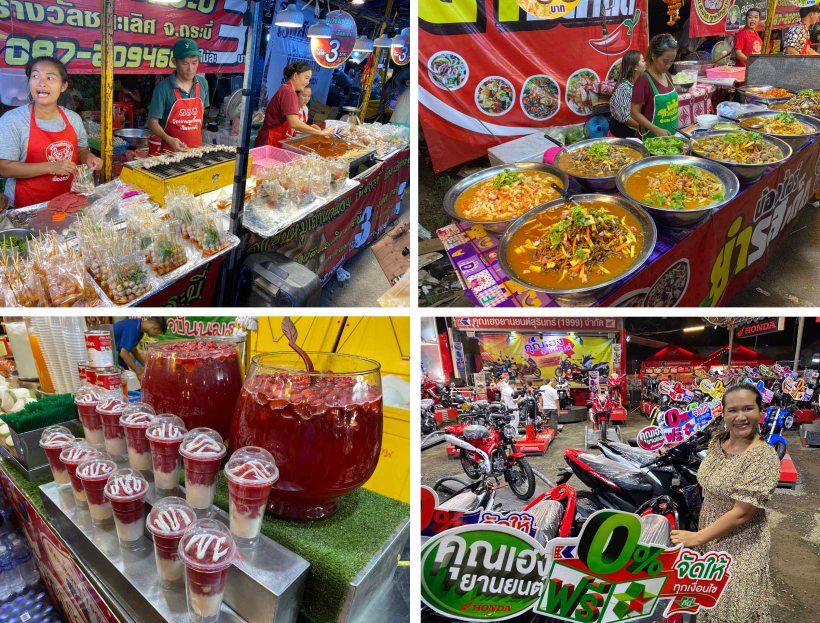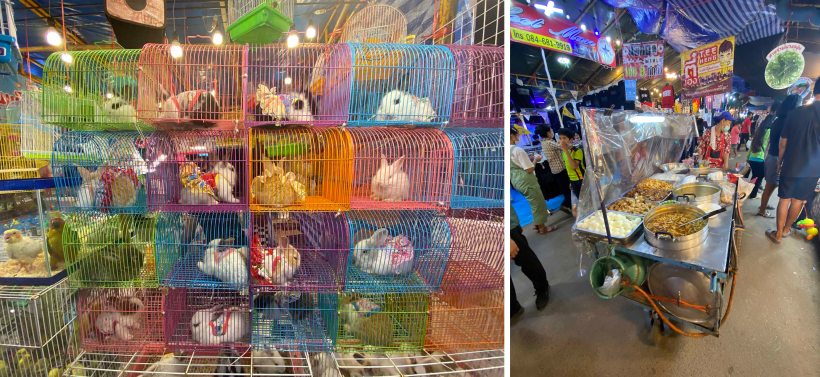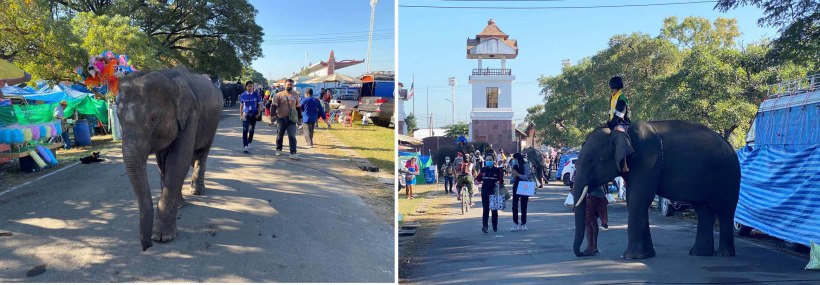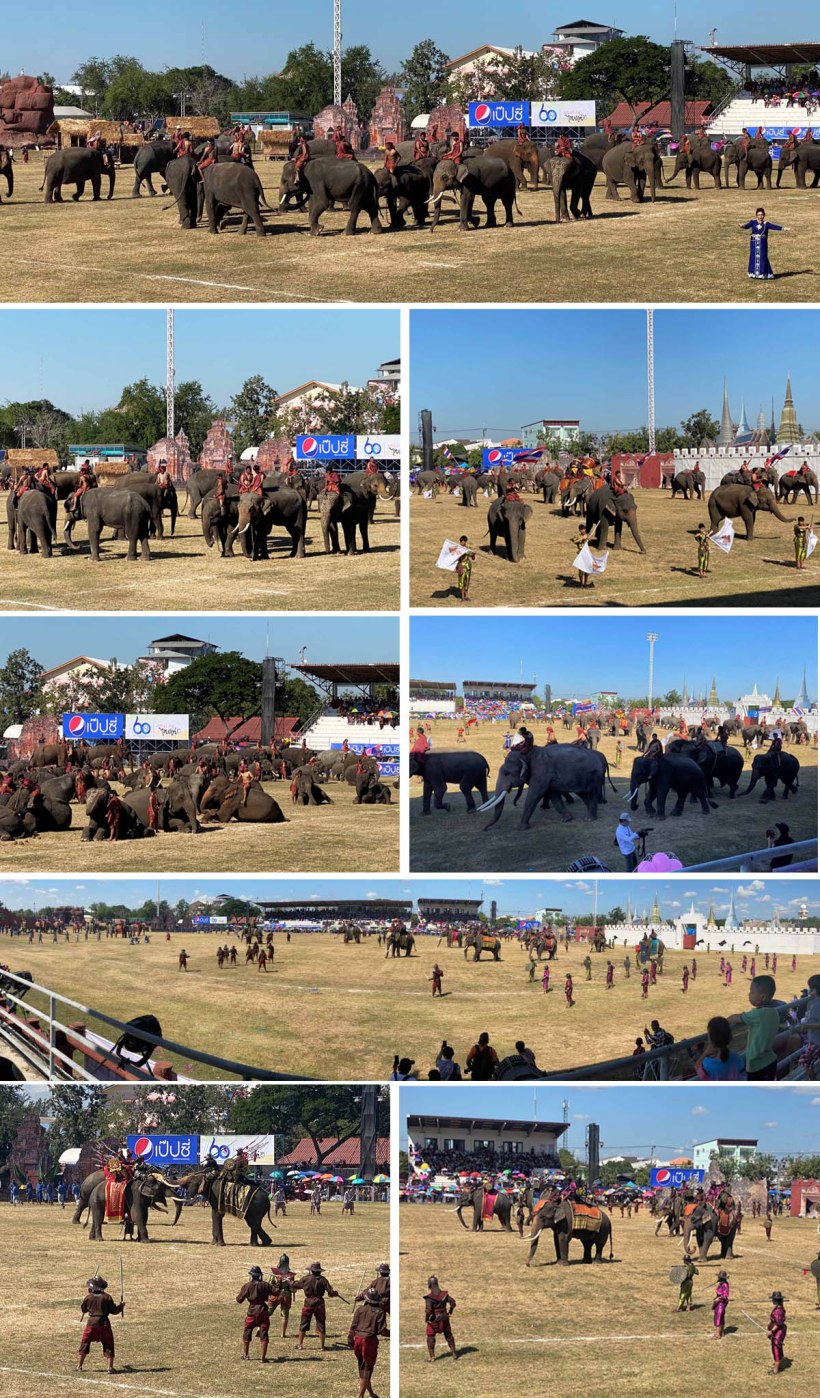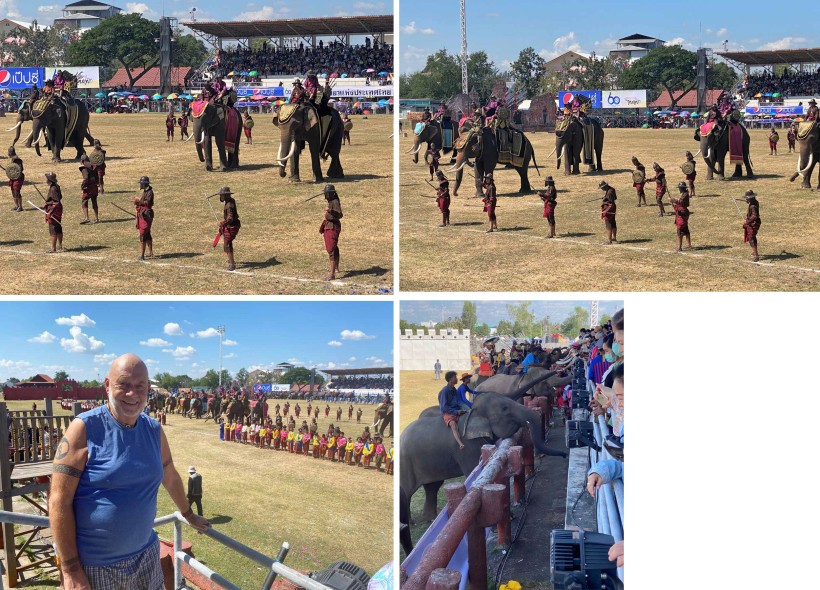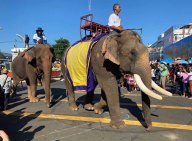 I am sure that you have heard of the expression ‘It never rains but it pours’ (very apt for Thailand!) and as commuters say the world over ‘I waited 20 minutes for a bus and then two came together.’
I am sure that you have heard of the expression ‘It never rains but it pours’ (very apt for Thailand!) and as commuters say the world over ‘I waited 20 minutes for a bus and then two came together.’
Why am I mentioning this?
After having spent all of the previous seven months no further than 10km from my home in Pattaya (See here for an account of living with ‘lockdown’ in Thailand) in late October together with my friend Ampai, I had made a road trip to Northern Thailand to explore many of the impressive historic ruins and temples. You can see a gallery of images from that trip here.
And now after returning to Pattaya to watch the coverage of the American Presidential election and delight at the demise of Trump, a little more than two weeks later we were off again on another road trip!
This time we were heading to the provincial capital of Surin for the famous Elephant Festival or, to give it its proper title, the Elephant Round Up. This is one of the most famous and colourful festivals in Thailand and, although located less than an hour’s driving time from Ampai’s village, which is located in the province of Surin, I had never actually got round to making a trip to the festival. I had a very good excuse in that I am rarely in Thailand in November but this year as a result of the pandemic I was and so I had no excuse!
My longstanding friend and former colleague Tony’s girlfriend Weena also comes from a village near Surin, so he too was planning to make a visit to the festival for the first time and booked hotel accommodation so all I had to do was make the six-hour drive and show up!
The festival has its origins in the royal hunts which were conducted in Surin Province during medieval times. The indigenous residents of Surin had been traditional practitioners of corralling elephants and training them as working animals and when the Ayutthaya Kingdom came into power between the 14th and 18th centuries over much of what is now present day Northern Thailand these hunts were converted into a public extravaganza and wild elephants were replaced with tame ones and overseas dignitaries were sometimes invited to watch the spectacle as guests.
This tradition was continued when King Chulalongkorn, also called Rama V, had a round-up specially staged for the Russian Prince Nicholas II in 1891 during the latter’s world tour as a crown prince. The round ups transitioned into a staged event rather than a genuine hunt and were finally abandoned in 1938.
The festival, in its contemporary form, was revived in the 1960s with less ritual but more flair, as a result of the steady decline in the economic value of elephants which often forced their handlers (mahouts) to seek occupations in the entertainment and tourism industry.
The ritualistic elements of the festival have long since disappeared and the ‘Round–Up’ is now purely a tourist festival and indeed a very successful and popular one. Any mention of Surin in Thailand today will usually lead to an immediate reference to the famous elephant festival.
The modern two-day event includes a parade of marching bands, dancers and colourful floats, a famous elephant breakfast and a variety of shows displaying the physical prowess and skill of the animals. These include soccer games, tugs of war, painting pictures and throwing darts as well as historic re-enactments of memorable battles in Thai history.
Whilst some of these circus type displays may no longer be acceptable in some western societies, one needs to be aware both of the central role that elephants have played in Thai history and culture and the current situation in regard to Thai elephants.
Historically, elephants in Thailand are considered to be very important culturally. There are many elephant references in Thai artworks, literature and elephants are depicted in both National and many Provincial emblems.
In Thai society elephants have also long played a substantial role in manual labour (primarily logging), war, royal iconography, and latterly the tourism industry.
There has been a close relationship between Thai Royals and elephants for hundreds of years and many artworks in Thai royal palaces and temples have elephant images within paintings on the walls. The elephant decorations and designs in the ancient royal temples at Sukothai, Si Satchanalai and elsewhere confirm this to be a historic and longstanding association.
For hundreds of years, elephants were captured and trained to be a form of transport and heavy labour and logging was the primary occupation of Thai elephants and their mahouts until logging was banned in 1989. When logging was legal, elephants hauled heavy logs through forests, which in turn gave many Thai people jobs, but after the ban, elephant trainers had to find other ways to feed themselves and their elephants and most of them turned to the entertainment industry and tourism.
Initially many mahouts took their elephants to Bangkok and larger cities to roam the streets with baskets of fruits for tourists to buy and feed the animal and elephants often were forced to perform tricks in exchange for money. In 2010 elephant protection laws were passed making these acts illegal.
There are now over 200 elephant camps in Thailand with almost 4000 captive elephants relying on income for tourists for their welfare. Many Thais have argued that calls to boycott all elephant camps ignore the bigger problem that domestic elephants require care and nurturing. In addition the complexity of herd dynamics in domestic elephants, the strong bonds that elephants form with their mahouts, the existence of killer and dangerous elephants as well as the history and culture of elephants in Thailand are all things that must be also factored into the caring of elephants and what tourist solutions are appropriate. It seems clear that there are no easy solutions and a variety of options must be considered and implemented to ensure the well-being of elephants.
The impact of the Covid-19 pandemic could have a catastrophic impact on the well-being of elephants in Thailand, with the tourism industry coming to a stop and leaving nearly 4,000 elephants at risk, when most of their owners cannot afford to feed them without the revenue generated by tourism. Consequently there have been reports that owners have sold their animals to zoos or bartered them to the illegal logging business.
Most Thais revere elephants and believe it will bring merit to donate food and money to elephants and indeed bring good luck to walk between the legs of a docile elephant.
As a result the annual Elephant Round – Up in Surin is always enthusiastically supported by domestic tourists and (in normal years!) also attracts many international visitors.
I hope that the images that follow below will give you a taste of what was a very interesting, enjoyable and colourful Festival and for sure one that I now hope to revisit in future years.
The Procession
On the Friday morning of the two-day festival, a marching procession of approximately 300 elephants starts moving through Surin City from the railway station toward the elephant roundabout in the southern section of the city. Some elephants carry dignitaries who dismount their steeds on arrival and some elephants carry mahouts in authentic replicas of battle outfits from the Thai–Khmer–Laos battles of bygone eras. Intermingled with the elephant procession are lavishly decorated motorised floats and students of local schools with their teachers in traditional dress, dancing and playing music.

Many groups from local schools and communities in colourful traditional costumes perform in Surin in the week leading up to and at the time of the Festival.

The crowd eagerly await the arrival of the elephant parade and trestle tables are piled high with fruit for the elephants’ breakfast.
The Elephant’s Breakfast
The tables for the banquet measure 400 meters in length both around the roundabout and along one of the roads leading off the roundabout and are customarily decorated with traditional silk cloth. The tables are piled high with as much as 50 tonnes of ripe bananas, pineapples, watermelons, leaves, bamboo, tree bark, and other fruits and vegetables and any leftovers are taken home by the local people. Apparently on November 14, 2003, the buffet set a Guinness World Record for “largest elephant buffet” when 269 elephants came together to devour over 50 tonnes (110,000 lb) of fruit and vegetables. Elephants eat 100-200 kilograms of food per day or approximately 5% of their body weight! As elephants only digest about 40 percent of their daily intake they can produce upwards of 50–60 kg of dung daily!
The Night Market
No Thai festival or celebration is complete without a night market and indeed Thais talk about going to ‘market’ far more frequently than they talk about going shopping. Thai markets are a photographer’s paradise with a vibrant and energetic mix of colour, activities and people providing no end of photographic possibilities and Surin was no exception. There was a large market established for both the weekend and the preceeding week with food (of course!) dominating the fare available, but also clothing, pets, amulets, furniture, motor bikes, telephony and something for everybody. Indeed I ended up buying 12 picture frames and a protective screen and case for my phone. With no new cases of Covid-19 in Thailand for several months, there were no restrictions on people entering (although facemasks and temperature checks were required) and there were thousands of people milling around the many hundreds of stalls. The following images will hopefully give an indication of the atmosphere if not of the temperature and high humidity!
The Elephant Round-Up Show
The elephants and their mahouts all congregated at the Elephant Stadium just after dawn and the show got going around 8.30am with a processional entrance of the elephants carrying dignitaries to the VIP section of one of the grandstands, which was followed by a welcoming speech from the Chairperson of the festival. The two-hour program includes displays of elephant capture techniques and various displays and entertainment including elephant football (or was it polo?), darts and painting as well as a tug of war where a bull elephant regularly outpulls as many as 100 people on the other end of the rope!
The finale of the show is a re-enactment of a historical battle between Siamese and Burmese forces. They took up positions according to traditional battle tactics, with a front row of foot soldiers, central portion of elephants protecting the “king” elephant in the middle and a rear guard. The battle ended with a Siamese victory so no surprise there!
Sound and Light Show
Each year on the Friday and Saturday there is a Sound and Light Show, although when we went to the stadium on the Friday we had not realized that on the first night it takes place at Prasat Si Koraphum, a 13th century Khmer temple located a 30-minute drive from Surin City! On the Saturday evening it takes place in the Elephant Stadium and is in essence the same show as the morning Round Up show but with lighting and fireworks which gives it a different dimension. However my recommendation would to be watch the Sound and Light Show in the location of a historic temple.
So our 48 hours at the Surin Elephant Round – Up came to a close and we continued on for a week at Ampai’s village, an hour to the east of Surin and then to the island of Koh Chang for 8 days on the beach, before returning firstly to Pattaya and my own subsequent return to the UK for a family Christmas and New Year and to meet my first grandchild.
The issue of animal welfare is rightfully a matter of concern in most western societies and it is understandable that some people may have concerns about visiting any animal festival.
Before making any judgements about Surin’s Elephant Festival, I think one has to consider the role that elephants have long played in Thai societies and culture. Thailand has a long history of domesticating elephants for work and for war, with a lot of ritual and superstition around them and the festival does an excellent job of celebrating that role of elephants. Indeed the cultural programs and historical enactments were excellent.
On the other hand there were some of the less tasteful elephant tourism elements that are more like what you’d see in a circus. The elephants paint pictures, play football, throw darts at balloons, and perform other tricks. These are not natural for elephants and it is understandable that some people may find them distasteful.
For moral reasons I have not eaten meat for 25 years, but I would not seek to impose my views on others and, as far as the Elephant Festival is concerned, I believe it is up to everybody to make their own minds up in what they are comfortable with watching and supporting.
For myself I found the festival far more interesting and enjoyable than I anticipated, which is possibly another reason why I had not previously made an effort to visit the Round–Up in the past 15 years, but, now that I have, I am sure I will return for what was in my opinion a great visual experience.
© Michael Bromfield




